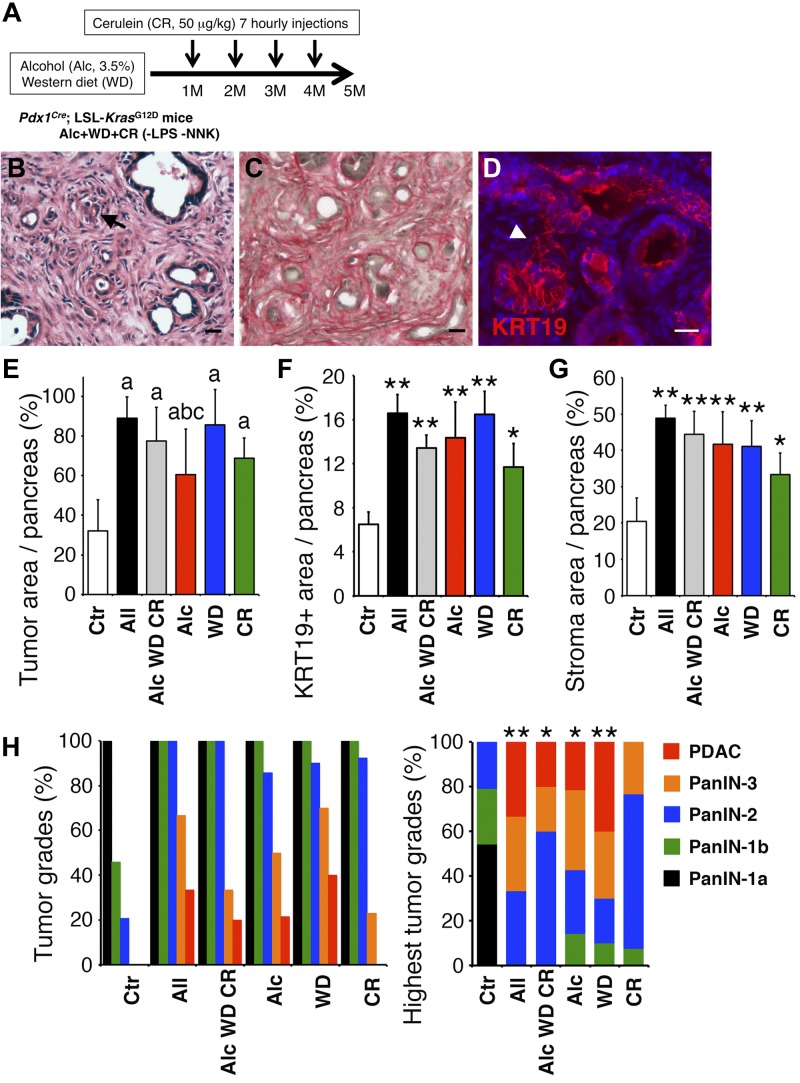Fig. 2.
Pancreatic tumor development in Pdx1Cre;LSL-KrasG12D mice treated with different insults. A: Pdx1Cre;LSL-KrasG12D mice were fed a Western diet containing 3.5% alcohol and treated with cerulein without LPS and 4-(methylnitrosamino)-1-(3-pyridyl)-1-butanone (NNK) for 5 mo. B–D: pancreas sections were stained with hematoxylin and eosin (H&E; B), Sirius red (C), and cytokeratin 19 (KRT19) antibodies (D). An arrow and arrowhead indicate pancreatic ductal adenocarcinoma (PDAC) and pancreatic intraepithelial neoplasia (PanIN)-3, respectively. Bar = 20 μm. E–H: quantification and qualification of pancreatic cancer developed in Pdx1Cre;LSL-KrasG12D mice. Mice were fed a regular chow (Ctr) or treated with all insults (All); a combination of alcohol, Western diet, and cerulein (Alc WD CR); alcohol (Alc); Western diet (WD); or cerulein (CR). E: the ratio of tumor areas in Pdx1Cre;LSL-KrasG12D pancreas sections stained with H&E. aP < 0.01 against Ctr, bP < 0.01 against All, cP < 0.05 against WD. F: the ratio of KRT19+ tumor areas in the pancreas sections. G: the ratio of Sirius red-stained stroma area in the pancreas sections. H: percentage of pancreata with each tumor grade (left) and highest tumor grades (right) were determined from the H&E-stained sections. *P < 0.05 and **P < 0.01 against Ctr.

